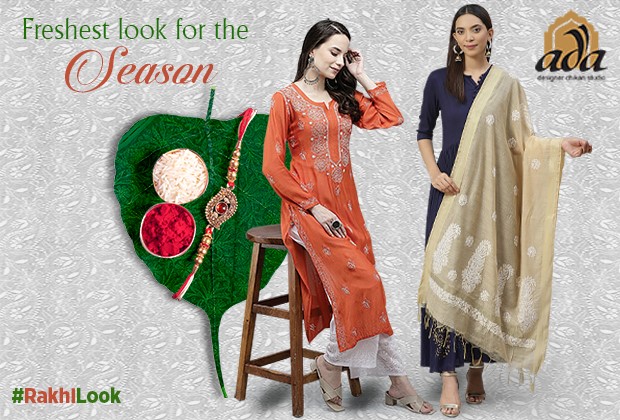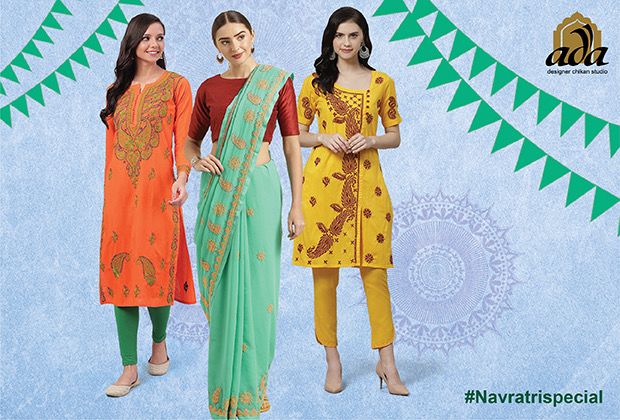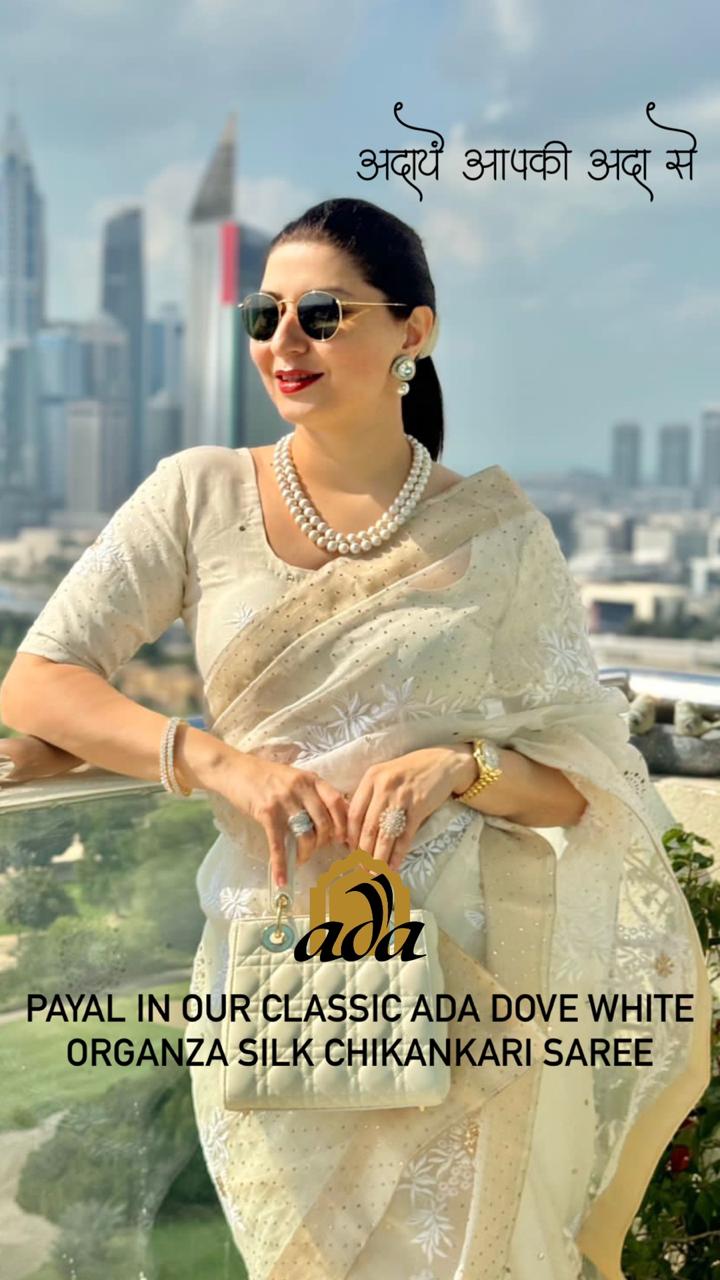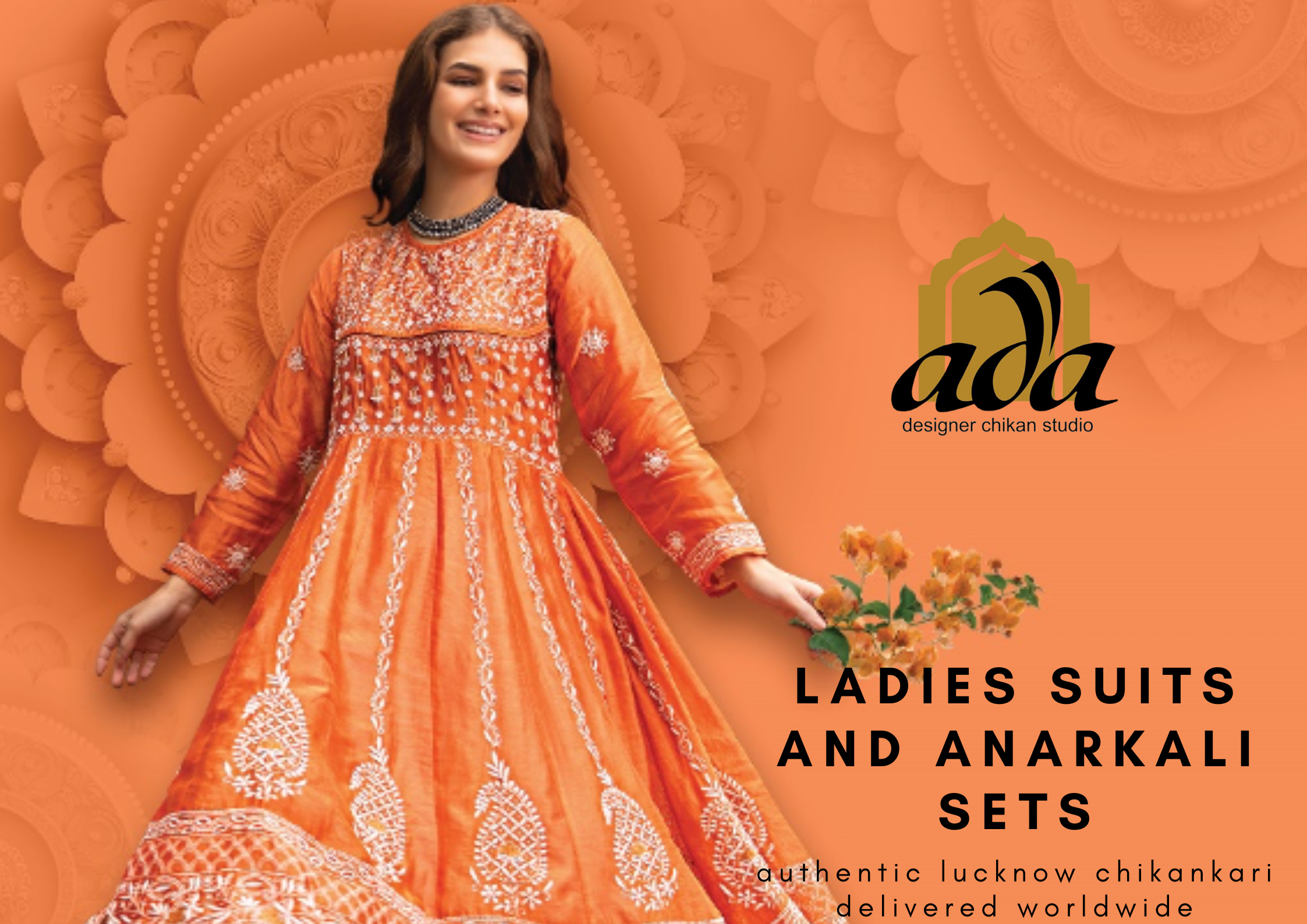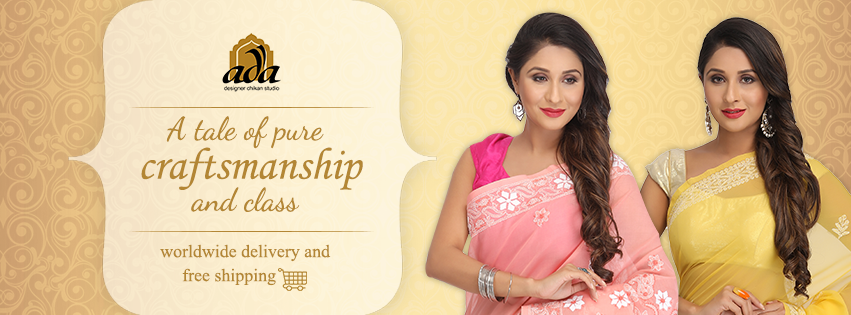Chikankari Embellishment-Stylish Ornate Wear
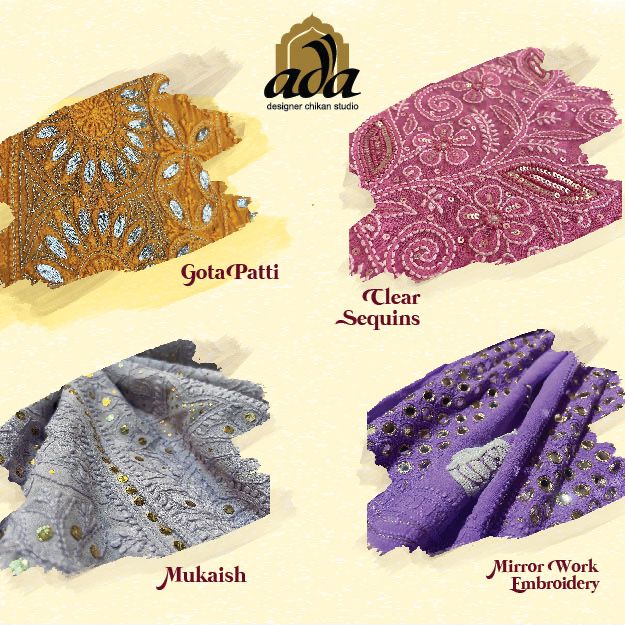
Chikan literally translates to “embroidery.” One of Lucknow’s oldest and most well-known artistic traditions, this traditional needlework style is considered to have been introduced by the Mughals. Modern embroidery techniques lack the delicate, sophisticated touch that the basic, accurate handwork on the garment imparts. The garment’s key feature is its basic design, and even if motifs have been added to make it appear more opulent, its fabric of choice is still simple and reasonably priced.
Chikankari fabric work is considered to be one of the most beautiful embroidery styles in the world due to its delicate, intricate, and meticulous nature. If you’re curious to know about chikankari embroidery and its various embellishments, keep reading this blog.
Mukaish

Chikankari features mukaish, a dazzling embroidery embellishment. It’s distinctive for its unique pattern and shine.
Since the Nawabi dynasty, this sparkling embroidery, also known as Kamdani or Fardi ka kaam, has been a part of the old Lakhnavi culture and heritage. The embroidery used in mukaish, muqaish, mukesh, or mokesh work is done with drawn, flattened, light metal threads known as badla.
Kaamdaani
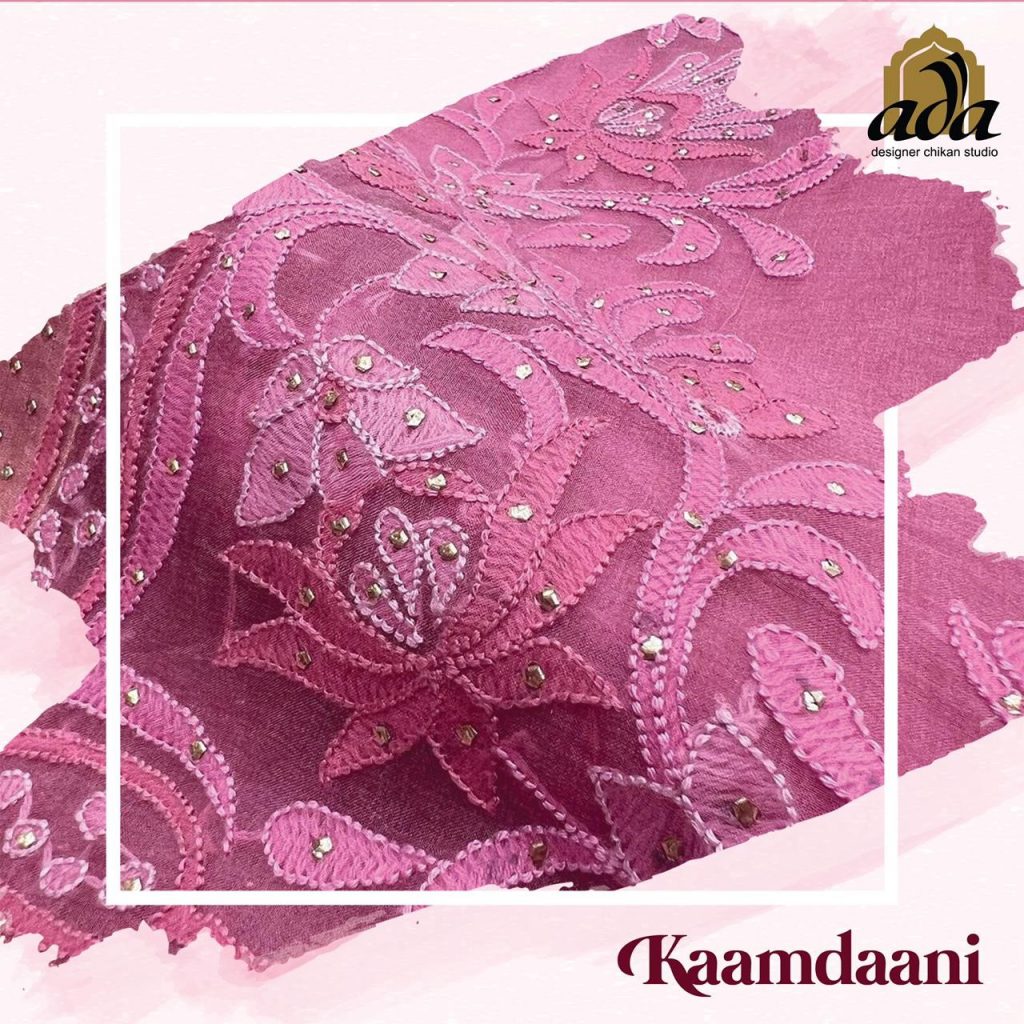
The metal wire embroidery was created using Badla, or drawn flattened metal strands.
The Mughals introduced this method of metal embroidery to India in the 16th century.
Metal wire is used to make lengthy stitches for kamdani, and the flat badla is used to weave the threads by slipping it in and out of the fabric like an embroidery thread.
Clear Sequins
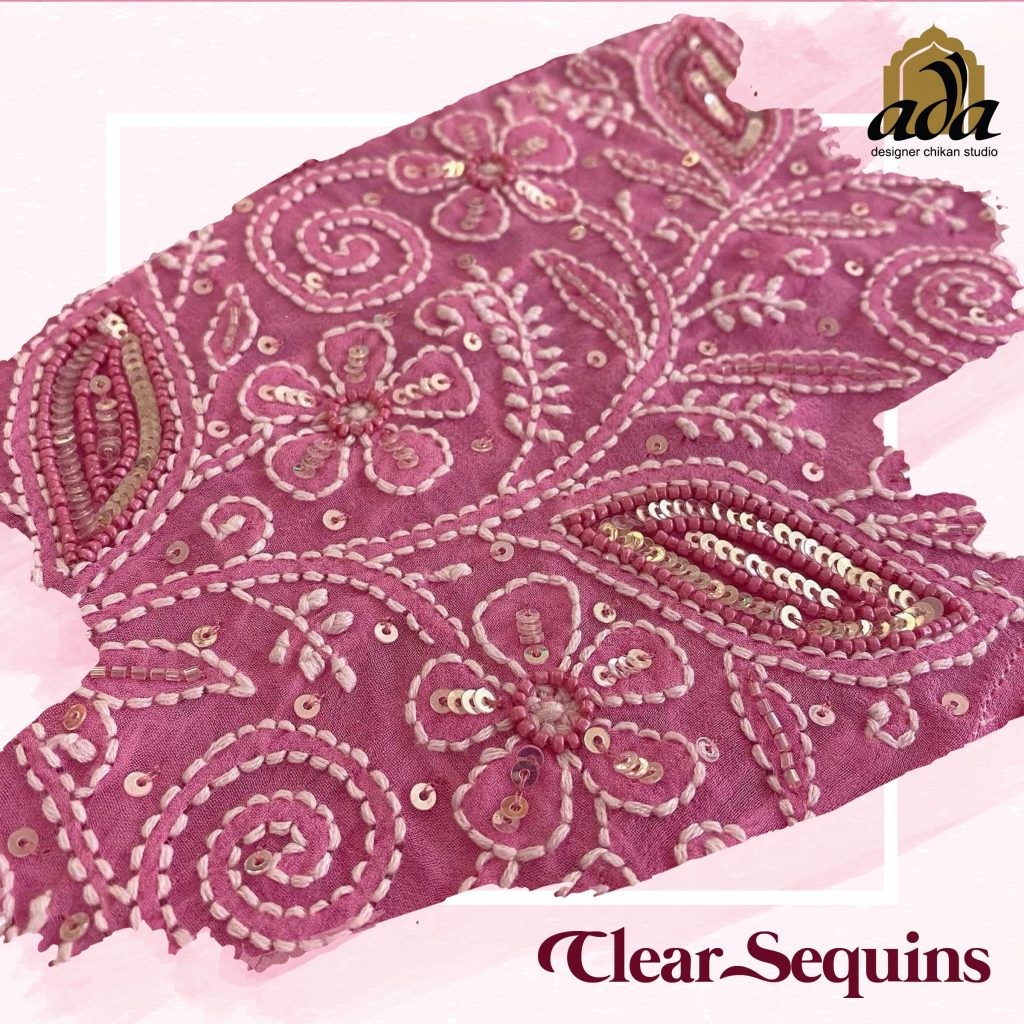
They are essentially flat, dazzling beads that resemble discs and are available in a variety of hues and patterns. The Arabic word “sikka,” which signifies coin, is the root of the English word “sequin.”
Originally, metallic disc-shaped beads were used for this embroidery, but currently plastic is largely used, even if it is sometimes wrapped in shiny paper or given as a gift. To make the fabric sparkle and gleam more, certain sequins work is done using discs with more reflective surfaces.
Gota Patti
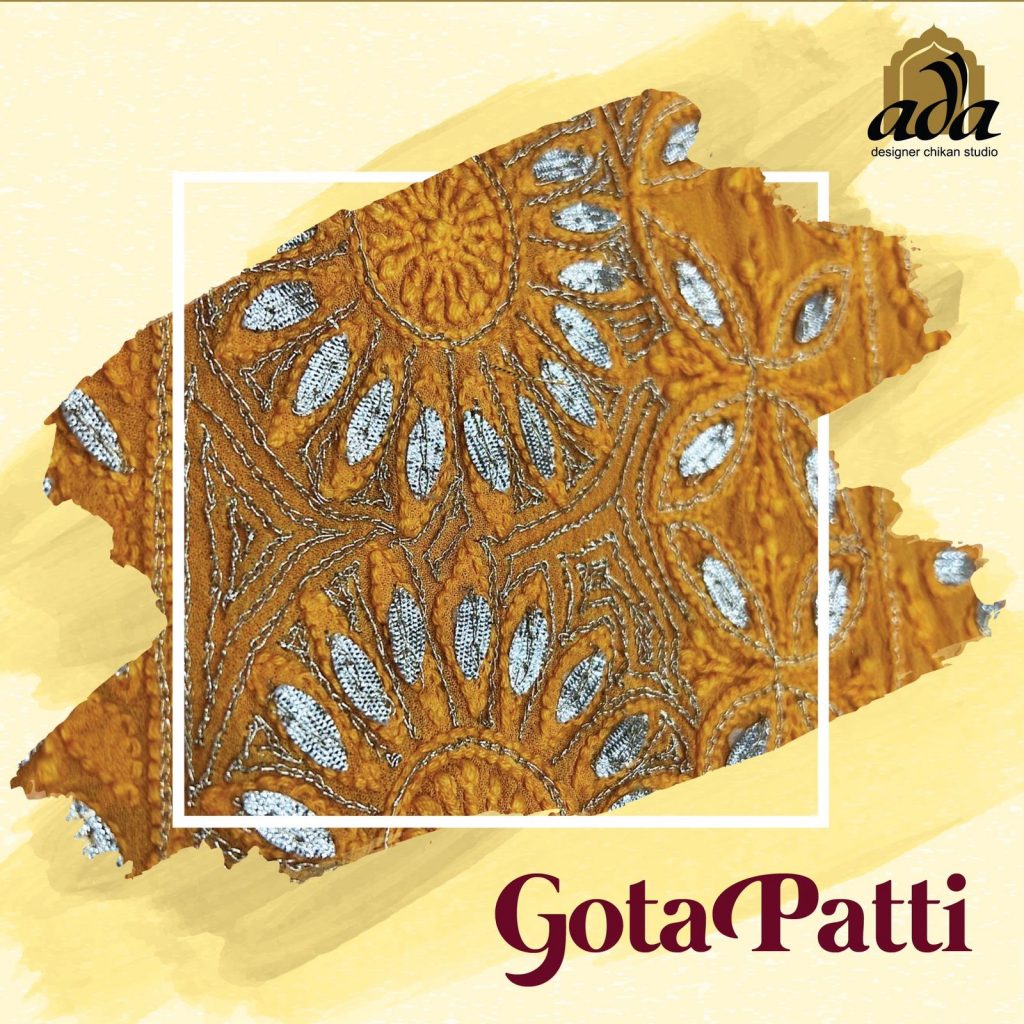
The fabric is covered with tiny zari pieces that have had their edges stitched down to form designs. The zari threads are typically constructed of copper with gold or silver color gilding, actual silver, gold plating, or an imitation.
Gota ribbons are made by weaving a weft of silk or cotton thread through a wrap of flattened gold and silver wire. This is then applied to other textiles as trimmings. Gota patti can be found on turbans, rakhis, torans, home decor, and juttis in addition to traditional Indian clothing.
Mirror work
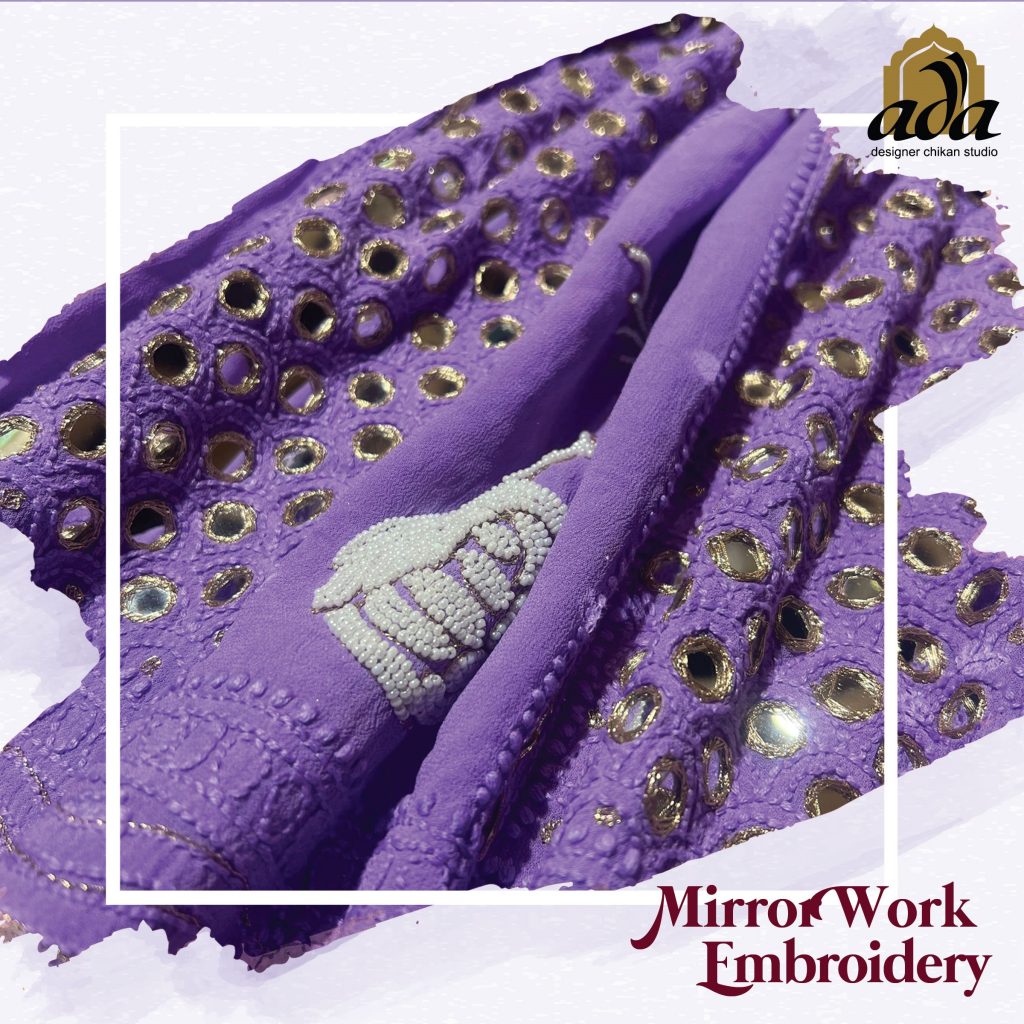
When miniature mirrors of various sizes and shapes are attached to cloth and embroidery is done all around the mirror, the process is known as “mirror work,” also known as “Sheesha work.” The cloth and items manufactured with them can have a lovely, opulent appearance because of the glitter of the mirrors (or the thin metal discs used in their place).
White Pearls
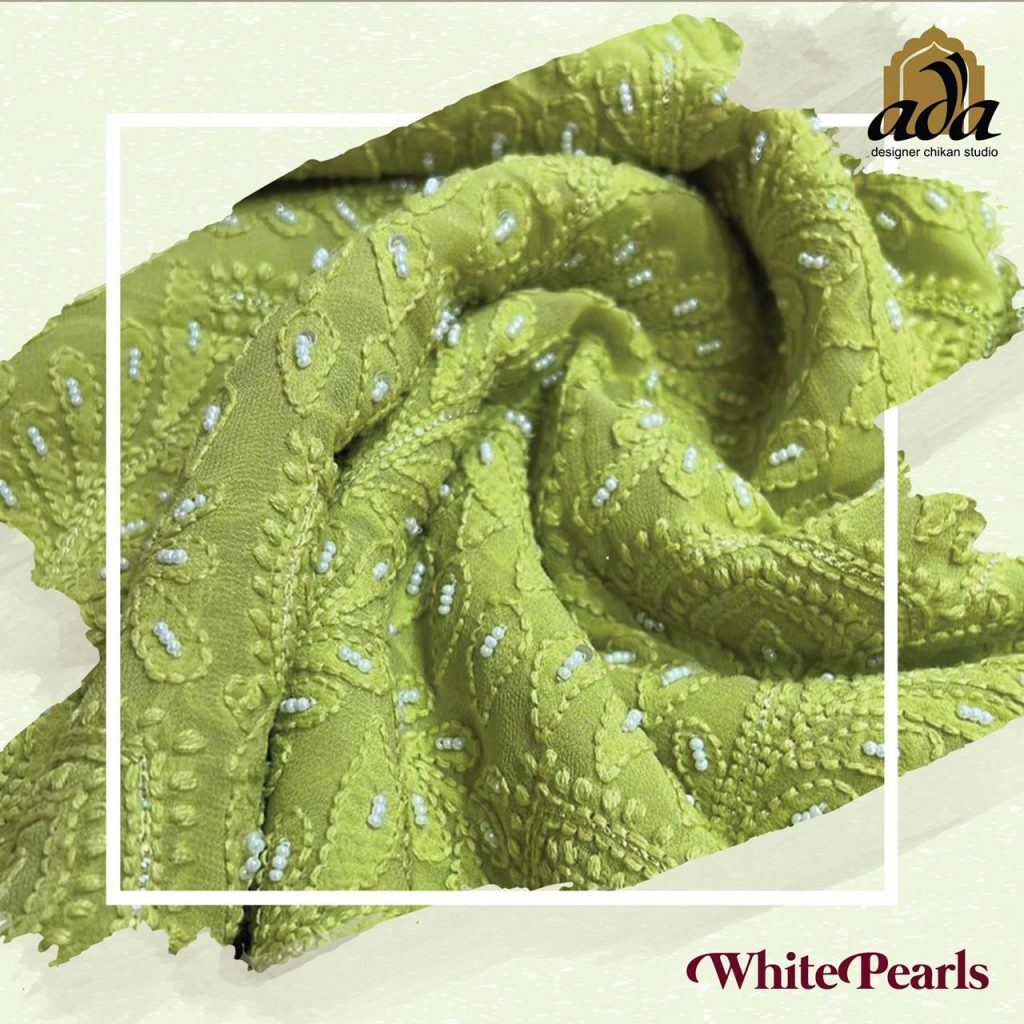
In order to decorate the cloth and add more complexity to the theme, white pearl embellishments (white glass or plastic round beads) are strung together and sewn into the fabric. White pearls are occasionally also used as border trimmings to give the entire outfit a delicate touch.
Zari Gold Single Taar
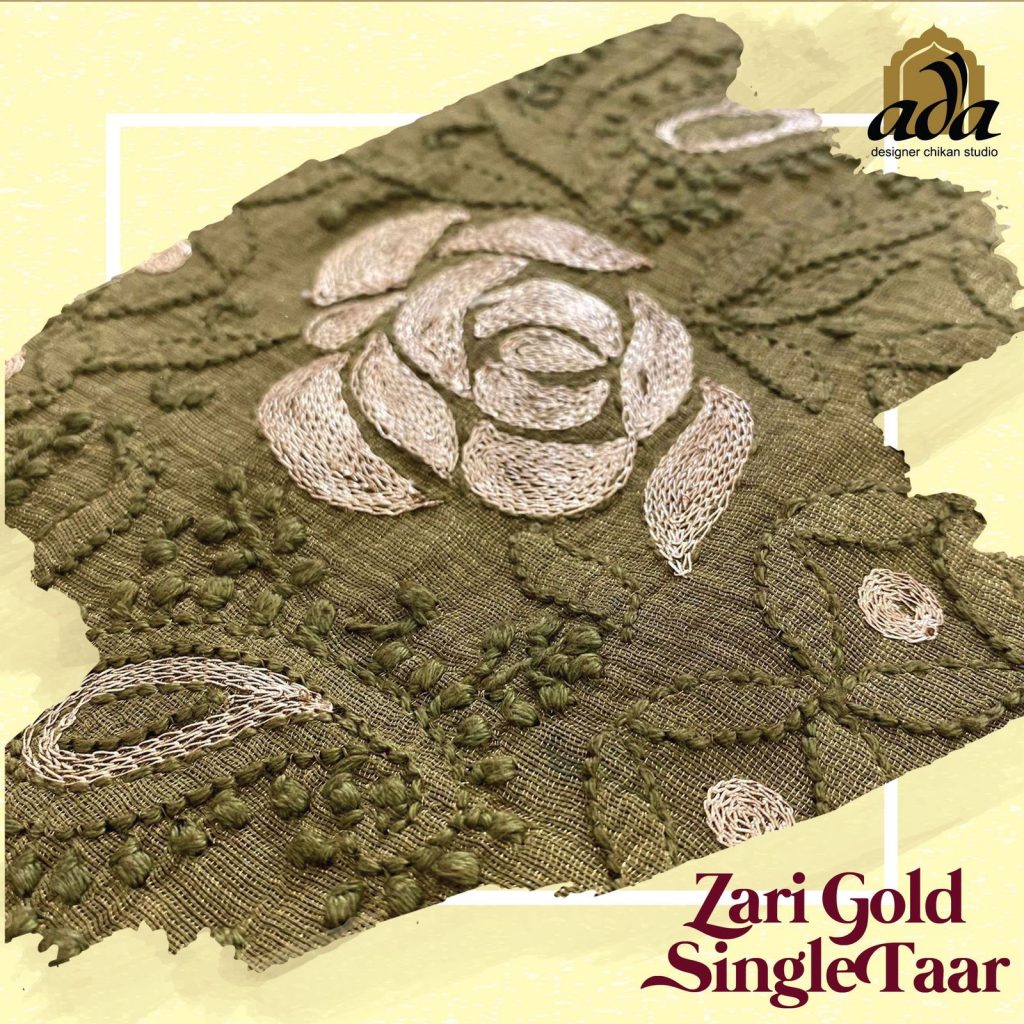
The metal wires used to form the threads have never been totally made of gold; instead, they have always been coated in gold to make them look like gold, often with very little actual gold present.
It is used in traditional clothes from India, Pakistan, and Bangladesh, particularly as brocade for saris and other clothing. Intricate patterns and sophisticated embroidery styles known as zardozi are created by weaving this thread into fabrics, mainly silk.
You can buy Ada Versatile and Stylish Chikankari Ornate Wear for everyone online from our website https://www.adachikan.com or continue to chat on WhatsApp 9129066155.

